Sustainable Landscaping: Eco-Friendly Practices for Vibrant Spaces
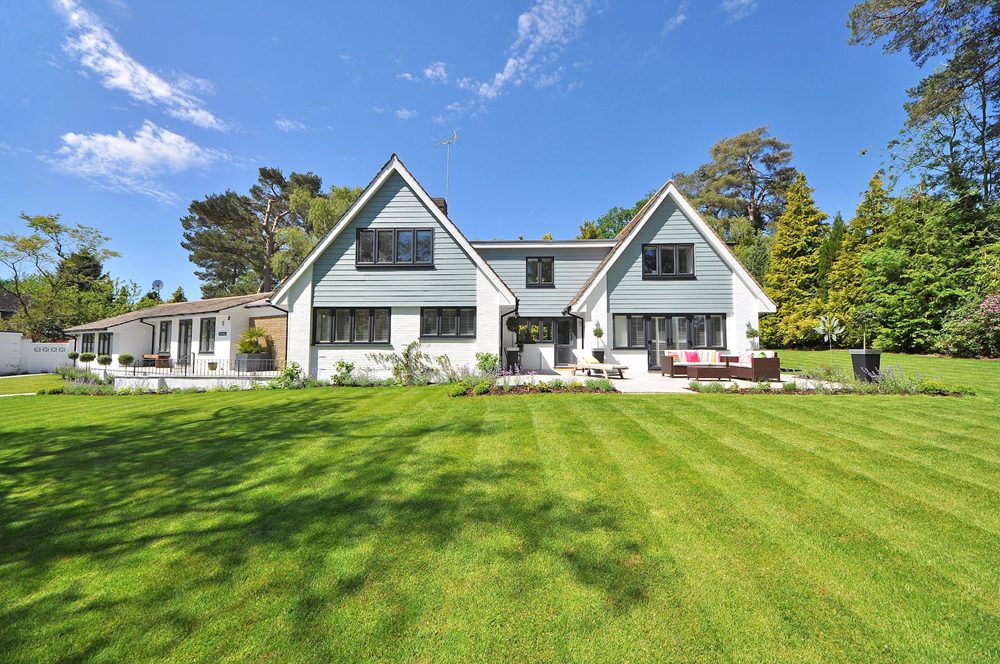
Sustainable Landscaping: Eco-Friendly Practices for Vibrant Spaces
Creating a harmonious and eco-friendly outdoor space is not only aesthetically pleasing but also contributes to environmental conservation. Sustainable landscaping practices are gaining popularity as people recognize the importance of preserving nature while enhancing their surroundings. In this article, we will explore various eco-friendly techniques to achieve a vibrant and sustainable landscape.
Water Conservation Strategies
One of the fundamental principles of sustainable landscaping is efficient water use. Incorporating water-saving technologies such as drip irrigation systems, rain gardens, and smart watering schedules can significantly reduce water consumption. Choosing native and drought-resistant plants adapted to the local climate further minimizes the need for excessive irrigation.
Soil Health and Composting
Maintaining healthy soil is essential for sustainable landscaping. Utilizing organic fertilizers and compost not only enriches the soil but also promotes biodiversity. Composting kitchen waste, leaves, and other organic materials reduces the reliance on synthetic fertilizers, contributing to a healthier ecosystem in your garden.
Native Plant Selection
Selecting native plants for your landscape offers numerous benefits. Native plants are adapted to the local environment, requiring less water and minimal maintenance. They also support local wildlife, providing habitats and food sources for birds, butterflies, and other beneficial insects. Choosing native plants contributes to the overall ecological balance of your garden.
Wildlife-Friendly Features
Create a welcoming environment for wildlife by incorporating features like bird feeders, bird baths, and insect hotels into your landscaping design. These elements not only attract and support local wildlife but also enhance the overall biodiversity of your outdoor space. Consider leaving some areas of your garden untouched to provide natural habitats for insects and small animals.
Energy-Efficient Lighting
Lighting is an essential aspect of landscaping, but it can also have environmental impacts. Opt for energy-efficient LED lighting to illuminate your outdoor space. Use solar-powered lights whenever possible to reduce electricity consumption. Properly designed lighting can enhance the beauty of your landscape while minimizing its ecological footprint.
Permeable Surfaces
Replace traditional impermeable surfaces like concrete and asphalt with permeable alternatives such as gravel, permeable pavers, or grass pavers. Permeable surfaces allow rainwater to infiltrate the soil, reducing runoff and preventing water pollution. This approach contributes to groundwater recharge and helps maintain a healthier ecosystem.
Sustainable Landscaping Practices for Everyone
Whether you have a small backyard or a vast garden, implementing sustainable landscaping practices is achievable for everyone. By making conscious choices in plant selection, water usage, and design elements, you can create a beautiful and environmentally friendly outdoor space.
In conclusion, sustainable landscaping practices not only enhance the visual appeal of your surroundings but also play a crucial role in environmental conservation. By incorporating water conservation strategies, promoting soil health, selecting native plants, and creating wildlife-friendly features, you contribute to a more sustainable and vibrant ecosystem. Consider these eco-friendly techniques to transform your outdoor space into a haven that benefits both you and the environment.
To learn more about sustainable landscaping practices, visit Sustainable landscaping practices.
Virtual Landscaping Consultations: Transform Your Outdoor Space Remotely

Virtual Landscaping Consultations: Transform Your Outdoor Space Remotely
In recent times, the world has witnessed a significant shift towards virtual experiences, and landscaping consultations are no exception. With the rise of technology, homeowners can now embark on a journey to transform their outdoor spaces through virtual landscaping consultations. This innovative approach brings convenience and expert advice right to your fingertips, allowing you to reimagine and enhance your outdoor oasis without leaving the comfort of your home.
The Convenience of Virtual Interactions
Virtual landscaping consultations offer unparalleled convenience for homeowners. With just a click, you can connect with experienced landscape professionals who can guide you through the entire design process. No more scheduling conflicts or on-site appointments – simply set up a virtual meeting and start discussing your landscaping ideas.
Interactive Design Exploration
One of the advantages of virtual consultations is the ability to explore designs interactively. Through virtual tools and platforms, you can visualize different landscaping ideas and receive real-time feedback from experts. This interactive approach enables a more collaborative and engaging design process, ensuring that your outdoor space reflects your vision and preferences.
Cost-Effective Solutions
Opting for virtual landscaping consultations can also be a cost-effective solution. Traditional landscaping consultations might involve travel expenses for both homeowners and professionals. Virtual interactions eliminate these costs, allowing you to invest more in the actual landscaping project rather than logistical considerations.
Expert Advice at Your Fingertips
With virtual landscaping consultations, access to expert advice becomes more accessible. Whether you are a seasoned gardener or a novice in landscaping, professionals can provide valuable insights, tips, and recommendations tailored to your specific needs. This personalized guidance ensures that your outdoor project is well-informed and professionally executed.
Overcoming Geographic Limitations
Virtual consultations break down geographic barriers, enabling you to connect with landscaping experts from around the world. This is particularly advantageous if you’re seeking specialized expertise or unique design perspectives that may not be readily available in your local area. The virtual landscape opens doors to a broader range of possibilities for your outdoor space.
Seamless Project Planning
Once you’ve discussed and finalized your landscaping design through virtual consultations, the transition to project planning becomes seamless. You can receive detailed plans, material lists, and cost estimates without the need for in-person meetings. This streamlined process accelerates the implementation of your landscaping vision.
Virtual Reality (VR) Enhancements
Some virtual landscaping consultations even incorporate advanced technologies like Virtual Reality (VR). Imagine virtually walking through your redesigned outdoor space before any physical changes take place. VR adds an immersive dimension to the consultation process, allowing you to experience your future landscape in a way that was previously unimaginable.
Environmental Considerations
Beyond the convenience and efficiency, virtual landscaping consultations align with environmental considerations. By minimizing the need for travel and on-site visits, this approach contributes to the reduction of carbon footprints associated with traditional landscaping practices.
The Future of Landscaping Consultations
As technology continues to advance, the future of landscaping consultations is undoubtedly headed towards more innovative and sustainable solutions. Virtual interactions provide a glimpse into this future, showcasing the potential for transformative outdoor spaces without compromising on accessibility or environmental responsibility.
In conclusion, virtual landscaping consultations offer a modern and efficient way to bring your outdoor dreams to life. Embrace the convenience, engage with experts, and explore the endless possibilities for transforming your outdoor space remotely. To experience the benefits of virtual landscaping consultations firsthand, consider connecting with professionals through Virtual Landscaping Consultations.
Easy Answers To Your Tough Plumbing Questions
Sometimes, you just need some advice to help you find the correct solution, and these tips offer a great resource to start from.
Septic Tank
Pump out your septic tank at least every five years to keep it working condition. Although it could cost a good deal of money to pump out your septic tank, cleaning up sewage backup in your home will ultimately cost much more.
Knowing what tools are what and how to use them will make you much better at plumbing. Before undertaking repairs on your own, plan ahead, or you may make a costly mistake.
Never use your bare hands to try fixing your garbage disposal to fix a problem.Even when the garbage disposal presents significant danger. You can search online to get schematics or troubleshooting advice for the disposal that you have.
Check the floor for any give in order to be sure that there is no damage in the toilet to determine floor damage. You can save money simply by noticing the problem as soon as possible.
Dish Soap
By regularly using a mixture of dish soap, cherry pits and dish soap, you can make sure that your garbage disposal is running well and smelling so clean it could be new.
If you have any water in your dishwasher that should not be there, check how the kitchen sink hoses are installed. The hose from your sink to your dishwasher has to go upward before going back down in order for the water of both locations to not mix.
Don’t flush items like paper towels, sanitary napkins, diapers or cotton balls, paper towels and cotton balls.
Be sure that the dryer’s lint trap of any debris. This will ensure that your dryer to work better and may also prevent fires. Be sure to check the trap for tears and rips, which can cause clogs and issues.
The key towards maintaining low plumbing bills is to prevent problems before they happen. Clogs present one of the top reasons for needing a plumber. Drains easily clogged by hair.It’s a lot easier to take hair out of a screen than eliminating it off a pipe.
Frozen pipes can cause you to incur expensive plumbing problems. The first thing you should do is make sure that all of the outside pipes are well insulated. Before winter, turn off the water to the outside faucet and drain and store all of your hoses. This can save you money on pipe repairs over time.
If you are prepared to get started working on your plumbing problems, make it priority to use these tips to help you along with the process. It’s great to save cash by making your own repairs, but when you have to call in the pros, be sure to use the right ones. These tips deserve to be used.…
Energy-Efficient Roofing Designs: Innovate for Sustainability
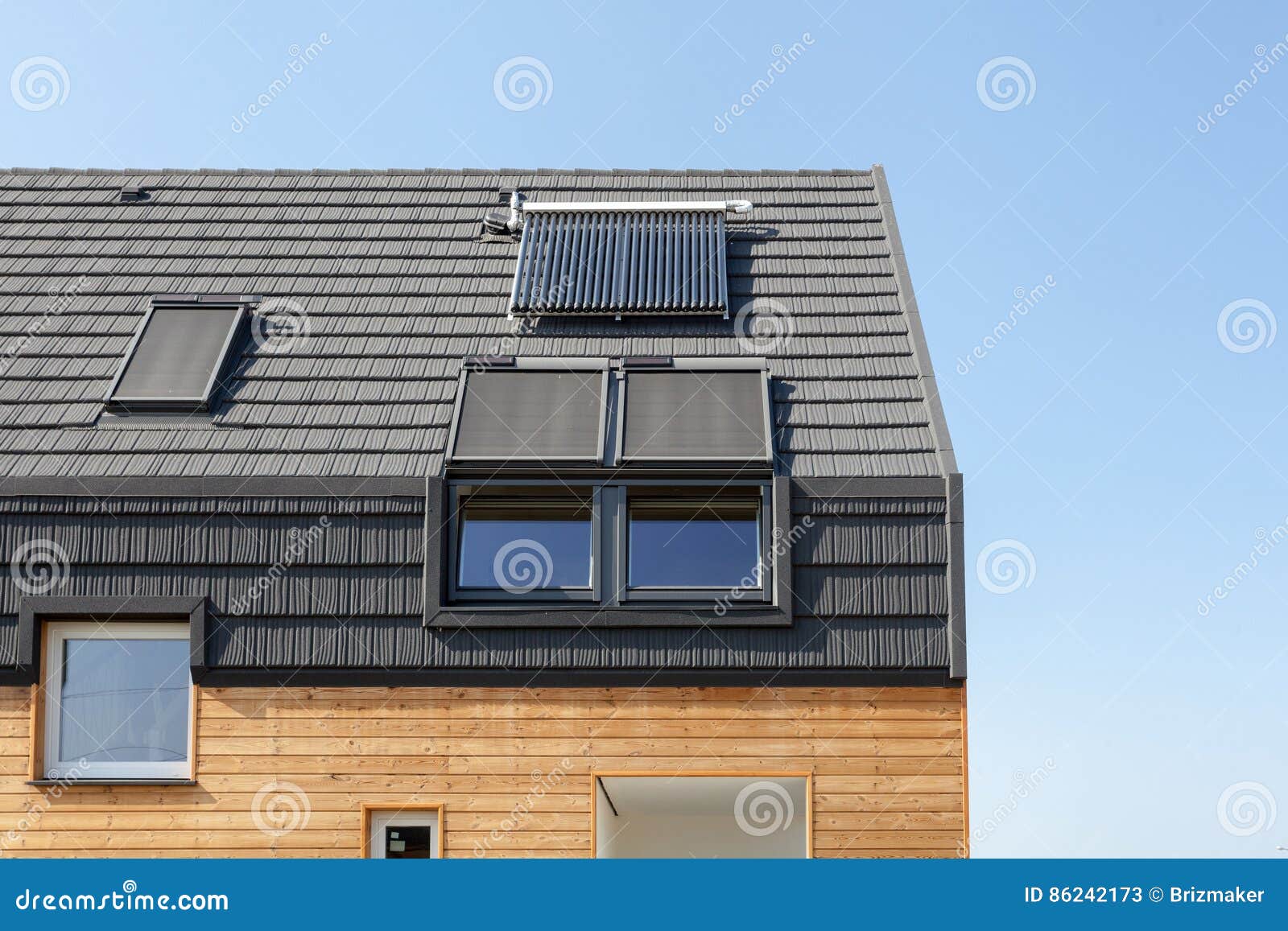
Innovating for Sustainability: Energy-Efficient Roofing Designs
As our world becomes increasingly focused on sustainable practices, every aspect of construction and design is under scrutiny. Roofing, an integral part of any structure, is no exception. In this era of environmental consciousness, energy-efficient roofing designs are gaining prominence for their contribution to sustainability and cost savings.
Understanding the Impact of Roofing on Energy Consumption
Roofs play a crucial role in regulating a building’s temperature and energy consumption. Traditional roofing materials may absorb and retain heat, leading to increased cooling costs during hot seasons. Energy-efficient roofing designs, however, aim to mitigate these challenges by incorporating innovative materials and technologies.
Cool Roofing Solutions: Reflecting the Heat
Cool roofing is a key concept in energy-efficient designs. These roofs are designed to reflect more sunlight and absorb less heat than traditional roofs. Reflective materials, coatings, and colors contribute to the reduction of the urban heat island effect, lowering the overall temperature in urban areas.
Solar-Ready Roofing: Harnessing Renewable Energy
Another aspect of energy-efficient roofing is its compatibility with solar technologies. Solar-ready roofing designs are increasingly popular, allowing for the easy installation of solar panels. This synergy between roofing and renewable energy sources contributes to a building’s overall energy efficiency and promotes sustainable practices.
Green Roofing: Bringing Nature to the Top
Green roofing involves the integration of vegetation on the roof surface. This innovative approach not only enhances the aesthetics of a building but also provides natural insulation. Green roofs absorb and reflect solar radiation, reducing the heat absorbed by the building and consequently lowering energy consumption.
Insulating for Efficiency: The Role of Proper Insulation
Proper insulation is a cornerstone of energy-efficient roofing. By preventing the transfer of heat between the interior and exterior, insulation helps maintain a consistent temperature inside the building. This reduces the reliance on heating or cooling systems, leading to substantial energy savings over time.
Ventilation Strategies: Enhancing Airflow for Efficiency
Energy-efficient roofing designs often incorporate improved ventilation systems. Adequate airflow helps regulate temperatures in the attic or roof space, preventing the buildup of heat. Proper ventilation not only enhances energy efficiency but also extends the lifespan of roofing materials by preventing moisture-related issues.
Smart Roofing Technologies: Integrating Intelligence
Advancements in technology have given rise to smart roofing solutions. These technologies can include sensors that monitor environmental conditions, adjusting the roof’s properties in response. For instance, smart roofing may automatically change reflectivity based on weather conditions, optimizing energy efficiency.
The Economic Benefits: Long-Term Savings and ROI
While the initial investment in energy-efficient roofing designs may be higher than traditional options, the long-term benefits far outweigh the costs. Reduced energy consumption leads to lower utility bills, and many energy-efficient solutions qualify for government incentives and certifications, providing a return on investment over time.
Environmental Impact: Contributing to a Greener Future
Choosing energy-efficient roofing is not just about personal savings; it is a commitment to environmental responsibility. By reducing energy consumption, these designs contribute to a decrease in greenhouse gas emissions, helping combat climate change and create a more sustainable future.
Energy-Efficient Roofing Designs in Action
To witness the tangible benefits of energy-efficient roofing designs, consider exploring Energy-efficient roofing designs. This comprehensive resource provides insights into the latest innovations, technologies, and best practices for creating roofs that not only protect but actively contribute to a sustainable and energy-efficient future.
Permeable Landscaping: Sustainable Surfaces for Modern Living
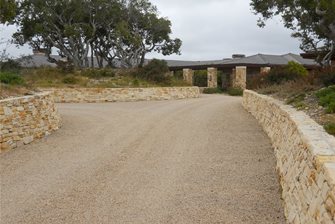
Revolutionizing Landscaping: Embracing Permeable Surfaces for Sustainability
Landscaping is no longer just about aesthetics; it’s a canvas for sustainable innovation. One significant stride in this direction is the adoption of permeable landscaping surfaces, offering a harmonious blend of functionality, environmental consciousness, and modern design.
Permeable Surfaces Unveiled: A Sustainable Solution
Traditional landscaping surfaces often contribute to water runoff, causing erosion and overwhelming drainage systems. Permeable landscaping surfaces, however, present an eco-friendly alternative. These surfaces are designed to allow water to pass through, reducing runoff and facilitating natural groundwater recharge.
Eco-Friendly Paving: Navigating the Benefits
Permeable paving, a subset of permeable landscaping surfaces, includes materials like permeable concrete, porous asphalt, and interlocking pavers. The primary advantage lies in its ability to reduce stormwater runoff, minimizing the burden on drainage systems. This eco-friendly solution promotes sustainable water management, especially in urban areas where impervious surfaces dominate.
Biodiversity Flourishes: The Role of Permeable Landscapes
Permeable landscaping surfaces contribute to the promotion of biodiversity. By allowing water to infiltrate the soil, these surfaces create healthier environments for plant life. Improved soil conditions support the growth of vegetation, fostering ecosystems that attract various species, from insects to birds. In essence, permeable surfaces are not just about managing water; they’re about cultivating life.
Stormwater Management Redefined
Conventional surfaces contribute to stormwater runoff, carrying pollutants into water bodies. Permeable landscaping surfaces act as natural filters, trapping pollutants and preventing them from reaching groundwater or nearby streams. This transformative approach to stormwater management aligns with sustainable practices, reducing environmental impact.
Aesthetic Versatility: Beyond Functionality
While sustainability is a key focus, permeable landscaping surfaces do not compromise on aesthetics. These surfaces come in various designs, textures, and colors, providing a wide array of options for creative landscaping. From driveways to patios, permeable surfaces seamlessly blend functionality with visual appeal, offering a versatile solution for modern outdoor spaces.
Aracatinet’s Permeable Landscaping Solutions: Paving the Way to Sustainability
Discover the future of landscaping with Permeable landscaping surfaces at Aracatinet. Our collection showcases innovative solutions that prioritize sustainability without sacrificing style. From driveways to garden paths, explore how permeable surfaces can redefine the aesthetic and environmental impact of your outdoor spaces.
Installation and Maintenance: Simplifying the Process
Implementing permeable landscaping surfaces involves a straightforward installation process. Properly designed permeable surfaces require minimal maintenance compared to traditional alternatives. The reduction in runoff also means less soil erosion, contributing to the longevity of outdoor structures.
Cost-Efficiency and Long-Term Savings
Investing in permeable landscaping surfaces may initially seem like a commitment, but the long-term benefits outweigh the costs. Reduced stormwater management expenses, lower maintenance requirements, and potential environmental credits make permeable surfaces a financially sound choice. It’s an investment that pays off both economically and environmentally.
Joining the Movement: Towards Sustainable Landscapes
As the world embraces sustainability, permeable landscaping surfaces emerge as a cornerstone in creating eco-friendly outdoor spaces. Join the movement towards responsible landscaping, where functionality, aesthetics, and environmental stewardship converge. With permeable surfaces, your landscape becomes a testament to a sustainable and forward-thinking lifestyle.
Solar Elegance: Innovative Solar Roof Tiles

Solar Elegance Unveiled: The Innovation of Solar Roof Tiles
In the realm of sustainable living and renewable energy, solar roof tiles emerge as an innovative and elegant solution. These tiles seamlessly integrate solar technology into the very fabric of a building’s structure, combining functionality with aesthetic appeal. Let’s explore the revolutionary concept of solar roof tiles and their impact on the future of energy-efficient architecture.
Harmony of Form and Function: The Integration of Solar Technology
Solar roof tiles represent a harmonious marriage of form and function. Unlike traditional solar panels mounted on top of existing roofs, solar roof tiles are designed to be an integral part of the building’s architecture. They serve a dual purpose, acting as both roofing material and solar energy generators. This integration not only maximizes energy capture but also elevates the visual appeal of solar solutions.
Discover the Future: Explore Solar roof tiles at Aracatinet
Embark on a journey into the future of energy-efficient architecture with Aracatinet’s collection of solar roof tiles. Our curated selection showcases innovative designs that seamlessly blend sustainability with elegance. Visit Aracatinet to discover the potential of solar roof tiles for your home or building.
Aesthetic Variety: Elevating Solar Technology with Style
Solar roof tiles come in a variety of styles, colors, and materials, allowing homeowners and builders to choose options that complement the overall design of the structure. Whether mimicking traditional roofing materials like slate or terracotta or adopting a sleek, modern appearance, these tiles bring a level of aesthetic versatility to solar technology, making sustainability a stylish choice.
Efficient Energy Capture: Harnessing the Power of the Sun
The primary function of solar roof tiles is, of course, energy capture. Each tile is equipped with photovoltaic cells that convert sunlight into electricity. The efficiency of these cells has significantly improved over the years, making solar roof tiles a viable and effective means of harnessing the power of the sun to generate clean and renewable energy for residential and commercial spaces.
Seamless Integration: Eliminating Obtrusive Solar Installations
One of the key advantages of solar roof tiles is their seamless integration into the building’s structure. Traditional solar panels can sometimes be considered obtrusive, altering the visual aesthetics of a property. Solar roof tiles, on the other hand, blend in with the overall design, providing a more discreet and architecturally pleasing solution to harness solar energy.
Durability and Longevity: Building with Sustainable Materials
Solar roof tiles are designed to be durable and long-lasting, providing both an energy-efficient and sustainable roofing solution. The materials used in these tiles are chosen for their resilience, ensuring that they can withstand various weather conditions while generating renewable energy for years to come. This durability contributes to the overall sustainability of the building.
Financial Incentives: Making Solar Solutions Cost-Effective
The initial investment in solar roof tiles may be higher than traditional roofing materials, but the long-term benefits often outweigh the costs. Many regions offer financial incentives, tax credits, and rebates for adopting solar technologies, making the transition to solar roof tiles a cost-effective and environmentally responsible choice in the grand scheme of a building’s lifecycle.
Environmental Impact: Reducing Carbon Footprints
By adopting solar roof tiles, homeowners and businesses actively contribute to the reduction of carbon footprints. The clean and renewable energy generated from solar tiles helps decrease reliance on fossil fuels, lowering greenhouse gas emissions. This environmental impact aligns with global efforts to combat climate change and transition toward a more sustainable energy landscape.
Technological Advancements: Paving the Way for Solar Innovations
As technology continues to advance, so do the capabilities of solar roof tiles. Ongoing research and development in the field of solar energy result in improved efficiency, enhanced storage solutions, and increased affordability. The continuous evolution of solar innovations ensures that adopting solar roof tiles remains a forward-looking investment in the future of clean and sustainable energy.
Conclusion: Solar Elegance for Sustainable Living
In conclusion, solar roof tiles represent a leap forward in sustainable architecture, offering an elegant solution that seamlessly integrates clean energy generation with the aesthetic demands of modern design. As solar technology continues to evolve, these tiles pave the way for a future where sustainability and elegance coexist harmoniously. Aracatinet invites you to explore the elegance of solar roof tiles and embrace a sustainable lifestyle that contributes to a brighter and cleaner tomorrow.
Rooftop Solar Installations: Harnessing Sustainable Energy
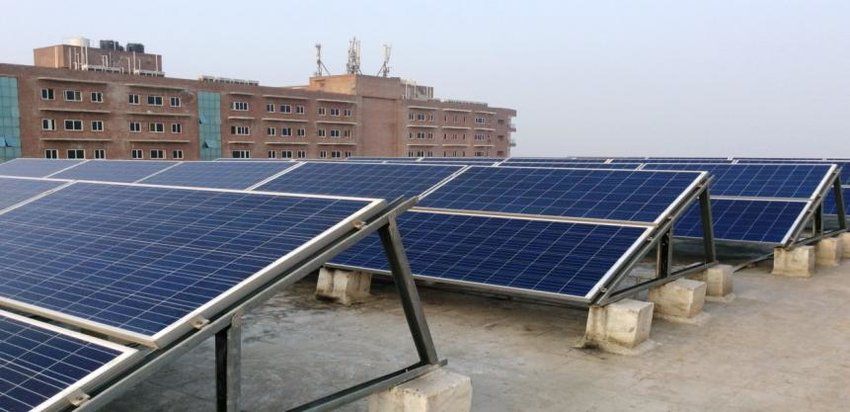
Harnessing Sustainable Energy: The Impact of Rooftop Solar Installations
Rooftop solar installations have emerged as a transformative force in the pursuit of sustainable energy solutions. From residential homes to commercial buildings, the installation of solar panels on rooftops is reshaping the way we generate and consume electricity, ushering in an era of clean and renewable power.
Empowering Homes: The Rise of Residential Solar Installations
Residential rooftop solar installations have become increasingly popular as homeowners embrace the benefits of generating their own clean energy. Installing solar panels on rooftops allows households to reduce their reliance on traditional grid electricity, leading to lower energy bills and a smaller environmental footprint. This shift towards residential solar is empowering individuals to actively participate in the green energy movement.
Commercial Applications: Businesses Embrace Solar Innovation
Beyond residential spaces, businesses are also recognizing the advantages of rooftop solar installations. Commercial buildings, factories, and offices are harnessing solar power to meet their energy needs sustainably. This not only reduces operational costs but also positions these businesses as leaders in environmental responsibility. Rooftop solar installations are proving to be a wise investment for companies aiming to align their operations with sustainable practices.
Environmental Benefits: Reducing Carbon Footprints from Above
One of the most significant advantages of rooftop solar installations is their positive impact on the environment. By capturing sunlight and converting it into electricity, solar panels help reduce reliance on fossil fuels. This, in turn, decreases carbon emissions, mitigating the environmental impact associated with traditional energy sources. Rooftop solar plays a crucial role in the global effort to combat climate change.
Cost Savings and Return on Investment: The Economic Case for Solar
While the initial investment in rooftop solar installations may seem substantial, the long-term economic benefits are compelling. Homeowners and businesses can experience significant cost savings on energy bills over the life of the solar panels. Many regions also offer incentives, tax credits, and rebates for solar installations, enhancing the return on investment and making the economic case for going solar even more attractive.
Technological Advancements: Enhancing Efficiency and Aesthetics
Advancements in solar technology continue to enhance the efficiency and aesthetics of rooftop solar installations. Sleeker and more efficient solar panels, along with improved energy storage solutions, contribute to a seamless integration of solar systems into various architectural designs. This technological progress not only boosts the performance of solar installations but also makes them visually appealing.
Energy Independence: Reducing Reliance on the Grid
Rooftop solar installations contribute to energy independence by reducing reliance on the traditional power grid. Homes and businesses with solar panels can generate their own electricity, providing a degree of autonomy during power outages or grid disruptions. This aspect of energy independence adds a layer of resilience to the overall energy infrastructure.
Community Solar Initiatives: Shared Benefits and Collective Impact
Community solar initiatives are gaining momentum as neighborhoods come together to implement rooftop solar installations collectively. This shared approach allows individuals who may not have suitable rooftops for solar panels to participate in and benefit from solar energy projects. Community-driven solar installations promote inclusivity and amplify the positive impact of sustainable energy adoption.
Educational Opportunities: Raising Awareness and Promoting Adoption
Rooftop solar installations offer unique opportunities for education and awareness. As more homes and businesses embrace solar power, there is a growing need for public understanding of the benefits and processes involved. Educational initiatives can empower communities to make informed decisions about adopting rooftop solar, fostering a culture of sustainability.
Join the Solar Revolution: Rooftop Solar Installations at Aracatinet.com
To explore the possibilities of rooftop solar installations and join the solar revolution, visit Rooftop solar installations. This platform provides valuable insights, resources, and success stories related to solar energy adoption. Empower your home or business with clean, renewable energy and be a part of the movement towards a more sustainable future.
Green Roof Stormwater Management: Sustainable Urban Solutions
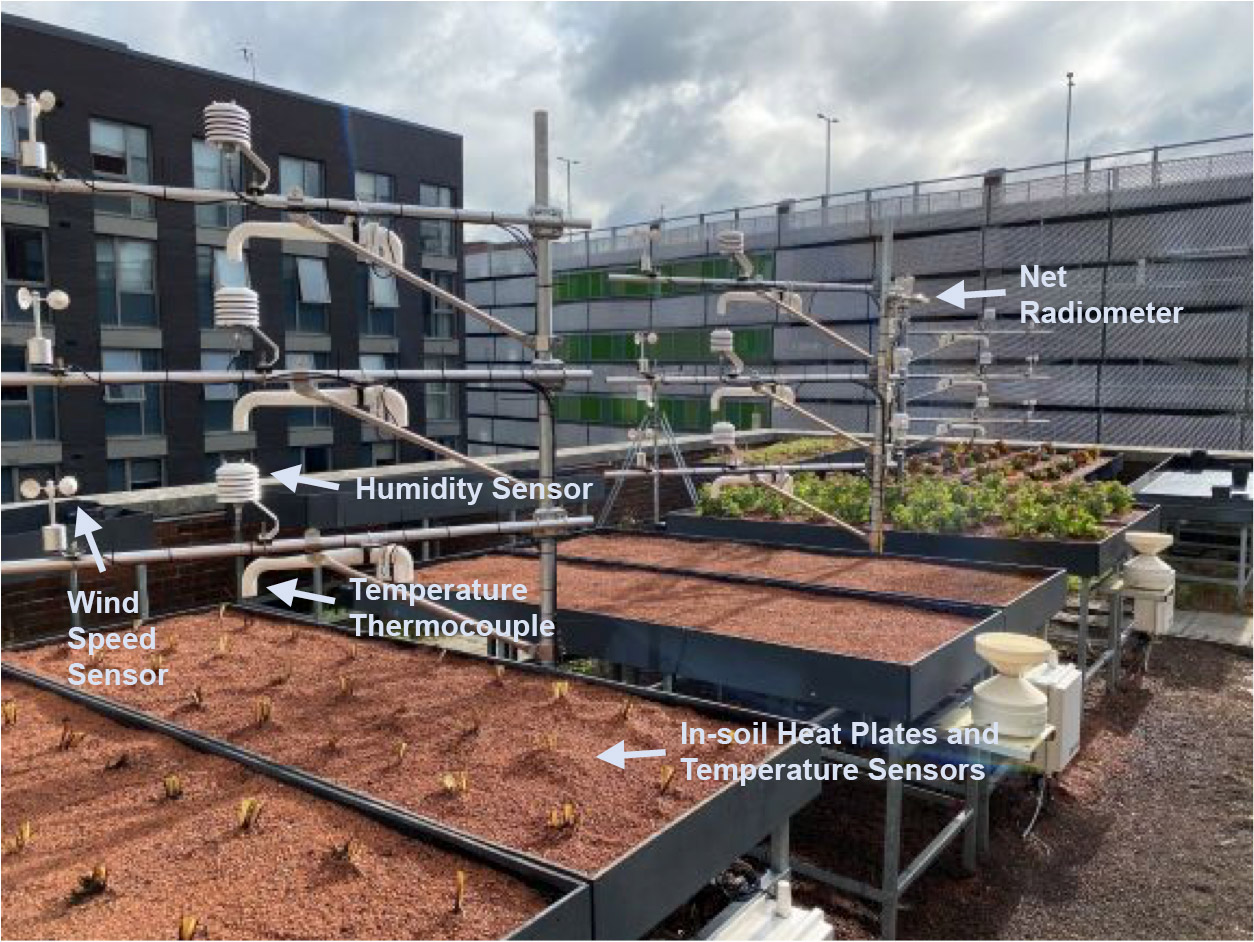
Revolutionizing Urban Spaces: Green Roof Stormwater Management
Urban areas face challenges in managing stormwater runoff, contributing to environmental issues like flooding and pollution. Green roof stormwater management emerges as a sustainable solution, utilizing vegetated roofs to mitigate the impact of stormwater. In this article, we explore the significance, benefits, and considerations of implementing green roofs for effective stormwater management in urban landscapes.
Nature’s Role: The Significance of Green Roof Solutions
Green roof stormwater management leverages the power of nature to address urban stormwater challenges. Traditional impermeable surfaces, such as concrete and asphalt, prevent rainwater from naturally infiltrating the soil, leading to increased runoff. Green roofs act as natural sponges, absorbing and slowing down rainwater, reducing the volume of runoff that contributes to drainage systems’ overload during heavy rainfall events.
Mitigating Urban Flooding: A Green Approach
Urban areas often face flooding issues due to the high percentage of impervious surfaces. Green roofs play a pivotal role in mitigating urban flooding by retaining rainwater and releasing it gradually. This controlled release helps alleviate the strain on stormwater infrastructure, reducing the risk of flash floods and providing a sustainable solution to manage excess water during intense rainstorms.
Biodiversity Boost: Creating Habitat on Rooftops
Beyond stormwater management, green roofs contribute to biodiversity in urban settings. The vegetation on green roofs provides habitat for birds, insects, and other pollinators. Introducing greenery to rooftops not only supports local ecosystems but also enhances the overall urban environment, promoting a healthier and more balanced ecology within city limits.
Energy Efficiency: Temperature Regulation and Cooling Effect
Green roofs offer additional benefits beyond stormwater management, including energy efficiency. The vegetation on these roofs acts as a natural insulator, regulating indoor temperatures and reducing the need for excessive heating or cooling. The cooling effect of green roofs, known as the “urban heat island” mitigation, contributes to a more comfortable urban environment while reducing energy consumption.
Air Quality Improvement: Filtering Pollutants
Urban areas often grapple with air pollution, and green roofs can play a role in improving air quality. The vegetation on green roofs filters pollutants from the air, trapping particulate matter and absorbing harmful gases. Implementing green roof stormwater management systems not only addresses water-related challenges but also contributes to a healthier urban atmosphere.
Long-Term Cost Savings: Economic Benefits of Green Roofs
While the initial investment in green roof installation may seem higher than traditional roofing options, the long-term cost savings are substantial. Green roofs extend the lifespan of the roof membrane by protecting it from temperature fluctuations and UV radiation. Additionally, the energy savings achieved through improved insulation contribute to reduced utility costs over time, making green roofs a financially viable investment.
Aesthetic Enhancement: Beauty in Functional Design
Green roof stormwater management systems not only provide environmental benefits but also contribute to the aesthetic appeal of urban landscapes. Transforming barren rooftops into lush, green spaces enhances the visual character of buildings and the surrounding environment. The integration of green roofs can create aesthetically pleasing cityscapes that prioritize both form and function.
Considerations for Implementation: Engineering and Design Factors
The successful implementation of green roof stormwater management requires careful consideration of engineering and design factors. Structural capacity, waterproofing, and plant selection are critical elements that influence the effectiveness and longevity of green roofs. Collaborating with experienced professionals in green roof design and installation ensures that the system is tailored to the specific needs and conditions of the urban environment.
Community Engagement: Raising Awareness and Involvement
Green roof initiatives offer an opportunity for community engagement and awareness. Educating residents and businesses about the benefits of green roofs encourages support and involvement in sustainable urban practices. Community participation in green roof projects fosters a sense of shared responsibility and pride in contributing to the resilience and sustainability of the urban environment.
Explore Green Roof Stormwater Management: Learn More at Aracatinet.com
To delve deeper into the world of green roof stormwater management and explore how this sustainable solution can benefit urban landscapes, visit Green roof stormwater management. This platform provides resources, insights, and guidance for individuals and communities interested in implementing green roofs for effective stormwater management. Join the movement towards greener, more resilient urban environments.
Terrazzo Renaissance: Modern Elegance in Flooring Trends
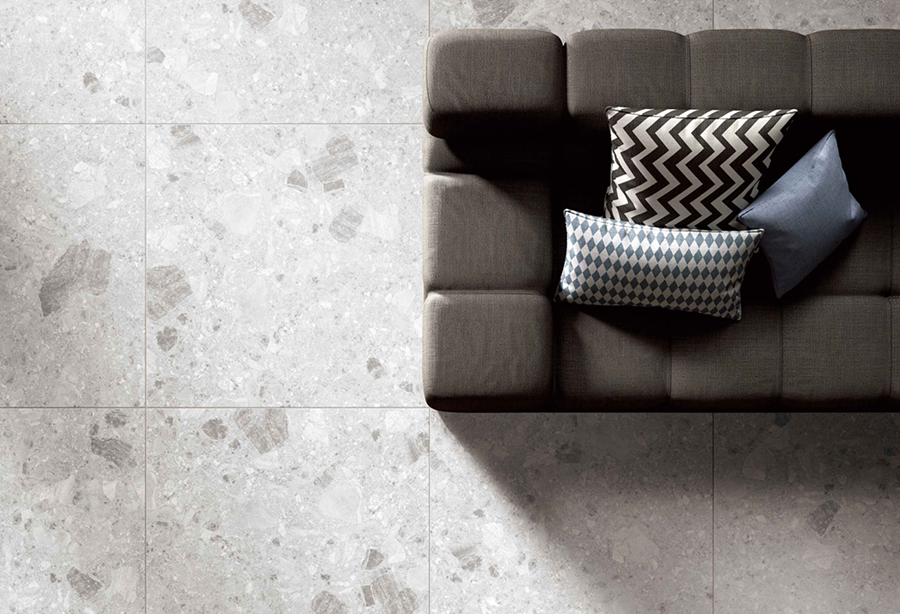
A Timeless Comeback: The Resurgence of Terrazzo Flooring
Terrazzo flooring, once a symbol of mid-century design, is experiencing a remarkable resurgence in popularity. Modern homeowners and designers are rediscovering the timeless charm and versatility of terrazzo, making it a sought-after choice for contemporary interior spaces.
Terrazzo’s Historical Roots: A Nod to the Past
The revival of terrazzo flooring is a nod to its rich history. Originating in ancient times, terrazzo resurfaced during the Venetian Renaissance as a cost-effective flooring solution. Composed of marble chips set in concrete, terrazzo gained prominence for its durability and artistic possibilities. Its resurgence today reflects a desire to blend tradition with modern aesthetics.
Versatility in Design: Endless Possibilities
Terrazzo’s resurgence is fueled by its unparalleled versatility in design. The material allows for endless combinations of colors, sizes, and aggregate materials. Modern manufacturing techniques enable the creation of custom terrazzo mixes, giving homeowners and designers the freedom to craft unique flooring designs that complement any interior style.
Terrazzo flooring resurgence captivates modern design. To explore more, visit aracatinet.com.
Contemporary Color Palettes: A Modern Twist
While traditional terrazzo often featured neutral tones, the resurgence embraces contemporary color palettes. From bold and vibrant hues to softer pastels, the modern terrazzo palette offers flexibility for diverse design schemes. Homeowners can customize terrazzo floors to match their interior color preferences, breathing new life into this classic material.
Seamless Integration with Modern Decor
Terrazzo’s adaptability allows it to seamlessly integrate with modern decor trends. Whether adorning minimalist interiors or eclectic spaces, terrazzo adds a touch of sophistication. Its ability to harmonize with various design elements, such as sleek furniture and statement fixtures, makes it a preferred choice for those seeking a versatile and timeless flooring solution.
Eco-Friendly Flooring Choice
As sustainability gains importance in design decisions, terrazzo stands out as an eco-friendly flooring choice. The use of recycled materials in terrazzo production aligns with contemporary eco-conscious values. Homeowners looking to make environmentally responsible choices find terrazzo appealing for its durability and minimal environmental impact.
Resilience and Longevity: Practical Advantages
Beyond its aesthetic appeal, the resurgence of terrazzo is fueled by its practical advantages. Terrazzo floors are known for their resilience and longevity, making them a wise investment. The material is resistant to wear, scratches, and stains, ensuring that terrazzo floors maintain their elegance and functionality for years, even in high-traffic areas.
Innovative Applications: Beyond Flooring
The resurgence of terrazzo extends beyond flooring applications. Designers are creatively incorporating terrazzo into countertops, wall claddings, and even furniture pieces. This innovative use of terrazzo showcases its adaptability and further cements its status as a versatile design element in modern interiors.
Sealed Surfaces: Easy Maintenance
Modern terrazzo flooring often features sealed surfaces, providing ease of maintenance. Sealing enhances the material’s resistance to moisture and stains, making it a practical choice for kitchens, bathrooms, and other areas prone to spills. The low-maintenance aspect of terrazzo contributes to its appeal for homeowners seeking both style and practicality.
In conclusion, the resurgence of terrazzo flooring signifies a harmonious blend of the past and the present. Its historic roots, coupled with contemporary design possibilities, make terrazzo a distinctive choice for modern interiors. Whether embracing vibrant colors or appreciating its eco-friendly attributes, homeowners can explore the enduring elegance of terrazzo. To embark on your terrazzo journey, visit aracatinet.com and discover the possibilities of this timeless flooring option.
Upcycled Wonders: Sustainable Landscaping with Repurposed Materials
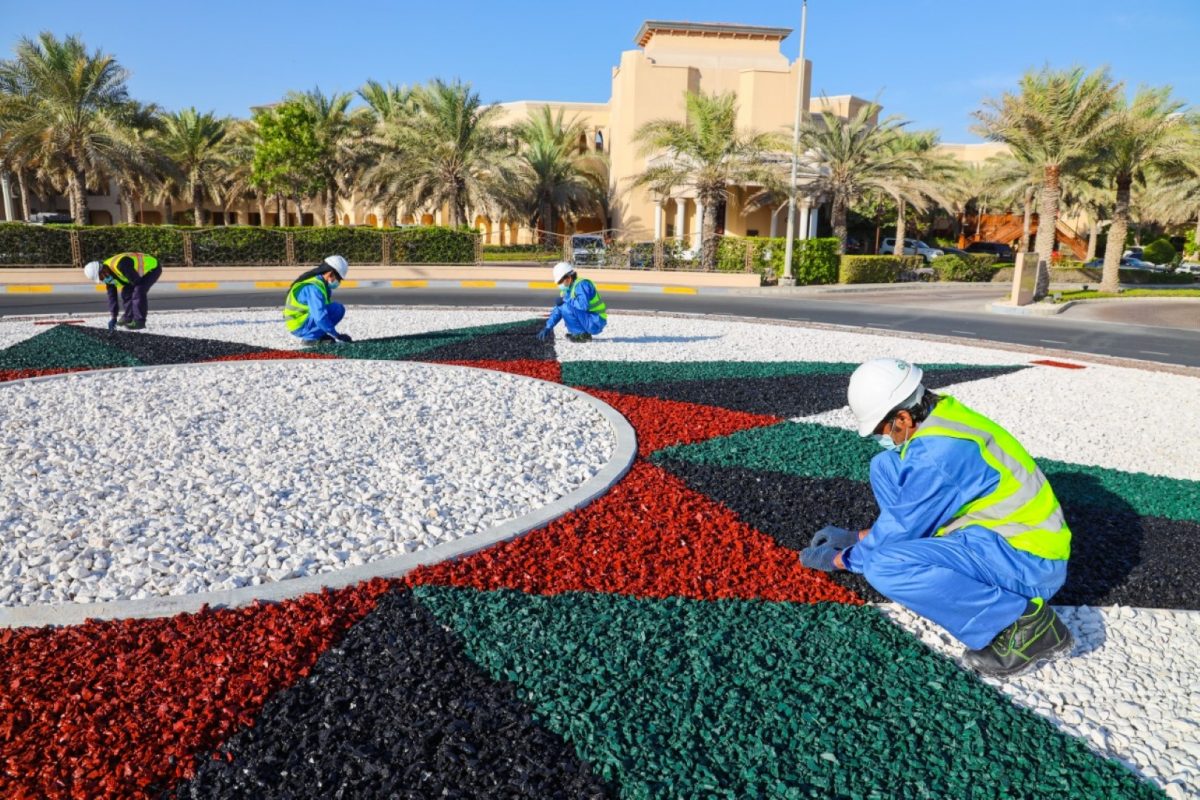
Upcycled Wonders: Transforming Landscapes with Sustainable Materials
Landscaping has evolved beyond the traditional use of materials, paving the way for sustainable practices that contribute to a greener planet. One innovative approach gaining traction is the use of upcycled materials in landscaping designs. From repurposed wood to recycled metal, the possibilities are endless, offering both aesthetic appeal and environmental benefits.
Revitalizing Outdoor Spaces
Upcycled materials breathe new life into outdoor spaces, bringing a unique charm to gardens, patios, and other landscaped areas. Weathered pallets find new purpose as rustic garden furniture, while discarded metal pieces are transformed into artistic sculptures. The revitalization of outdoor spaces with upcycled materials not only adds character but also reduces the environmental impact of landscaping projects.
Eco-Friendly Hardscaping Solutions
Traditional hardscaping materials often contribute to environmental degradation, but upcycled materials offer a sustainable alternative. Bricks salvaged from demolished structures can be repurposed for pathways, retaining walls, and other hardscaping elements. This not only reduces the demand for new materials but also minimizes waste in landfills, aligning landscaping practices with eco-friendly principles.
Creative Planters from Repurposed Objects
Give your plants a unique home by using upcycled objects as planters. Old tires, wooden crates, and even vintage containers can be transformed into creative and eye-catching plant vessels. This not only adds a touch of whimsy to your garden but also promotes the reuse of materials that might otherwise end up as discarded waste.
Sustainable Water Features
Water features are a popular addition to many landscapes, but their environmental impact is often overlooked. By incorporating upcycled materials into the design of ponds, fountains, and other water elements, you can create sustainable focal points. Reclaimed stone, salvaged metal, and repurposed wood can be skillfully integrated to enhance the beauty of the water feature while minimizing the ecological footprint.
Reducing Carbon Footprint with Upcycled Landscaping
Upcycled landscaping is not only visually appealing but also contributes to the reduction of carbon footprint. By using materials that have already been produced, upcycled landscaping minimizes the energy and resources required for manufacturing new products. This approach aligns with the global effort to combat climate change and promotes responsible consumption.
Community Engagement and Upcycled Landscaping Projects
Engage your community in sustainable practices by organizing upcycled landscaping projects. Encourage neighbors to donate unused materials, and collaborate on transforming shared spaces. This fosters a sense of environmental responsibility and community pride, as well as creating aesthetically pleasing communal areas.
Educational Opportunities for Upcycled Landscaping
Educational initiatives centered around upcycled landscaping can empower individuals to make environmentally conscious choices. Workshops, seminars, and online resources can provide valuable insights into the benefits of using upcycled materials in landscaping projects. This knowledge not only inspires creativity but also instills a sense of responsibility towards the environment.
Supporting Local Artisans and Upcycled Materials
Many local artisans specialize in creating unique pieces from upcycled materials. Supporting these craftsmen not only adds distinctive elements to your landscaping but also contributes to the local economy. By choosing handmade upcycled items, you become part of a movement that values sustainability, craftsmanship, and the preservation of traditional skills.
Upcycled Materials Landscaping: A Link to a Sustainable Future
Explore the endless possibilities of upcycled materials in landscaping and be a part of the sustainable living movement. Upcycled landscaping not only enhances the visual appeal of outdoor spaces but also serves as a tangible link to a more eco-conscious future. To learn more about incorporating upcycled materials into your landscaping projects, visit Upcycled materials landscaping.
In conclusion, the utilization of upcycled materials in landscaping is a powerful and creative way to contribute to a sustainable future. From transforming outdoor spaces to reducing carbon footprints, the adoption of upcycled landscaping practices has far-reaching benefits. Embrace the beauty of sustainable design, and let your landscaping project become a testament to responsible and environmentally conscious living.











